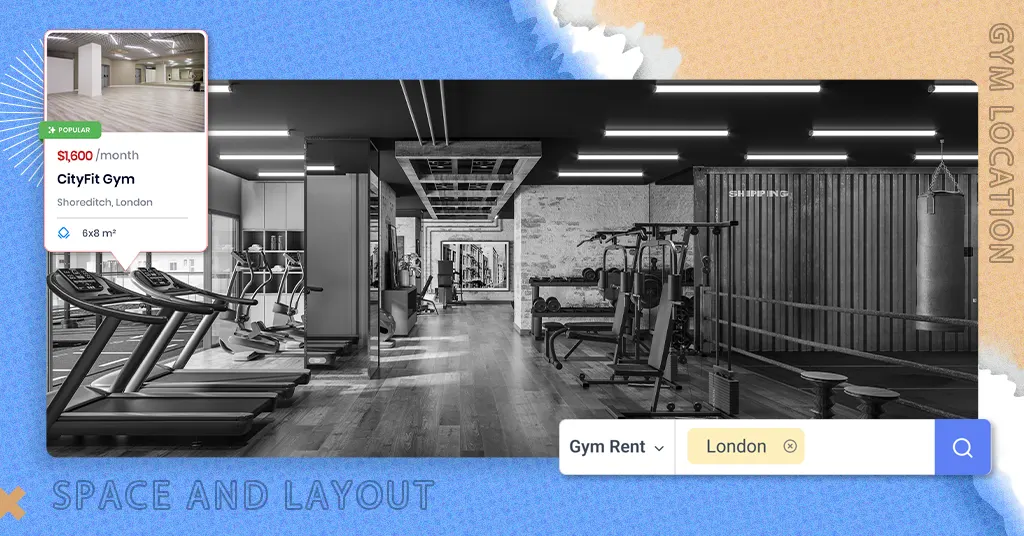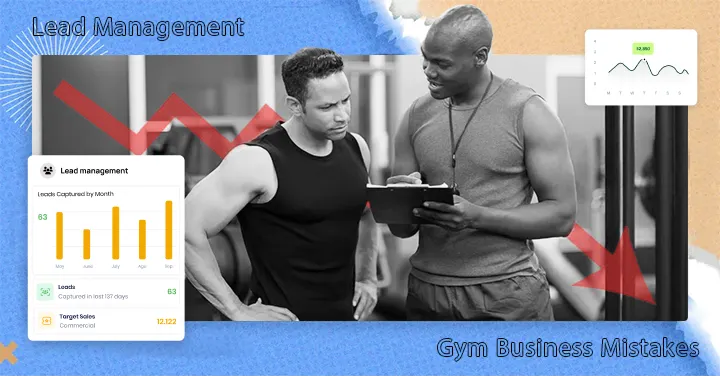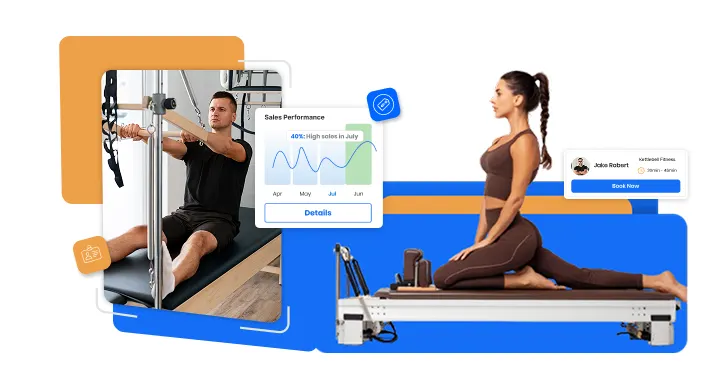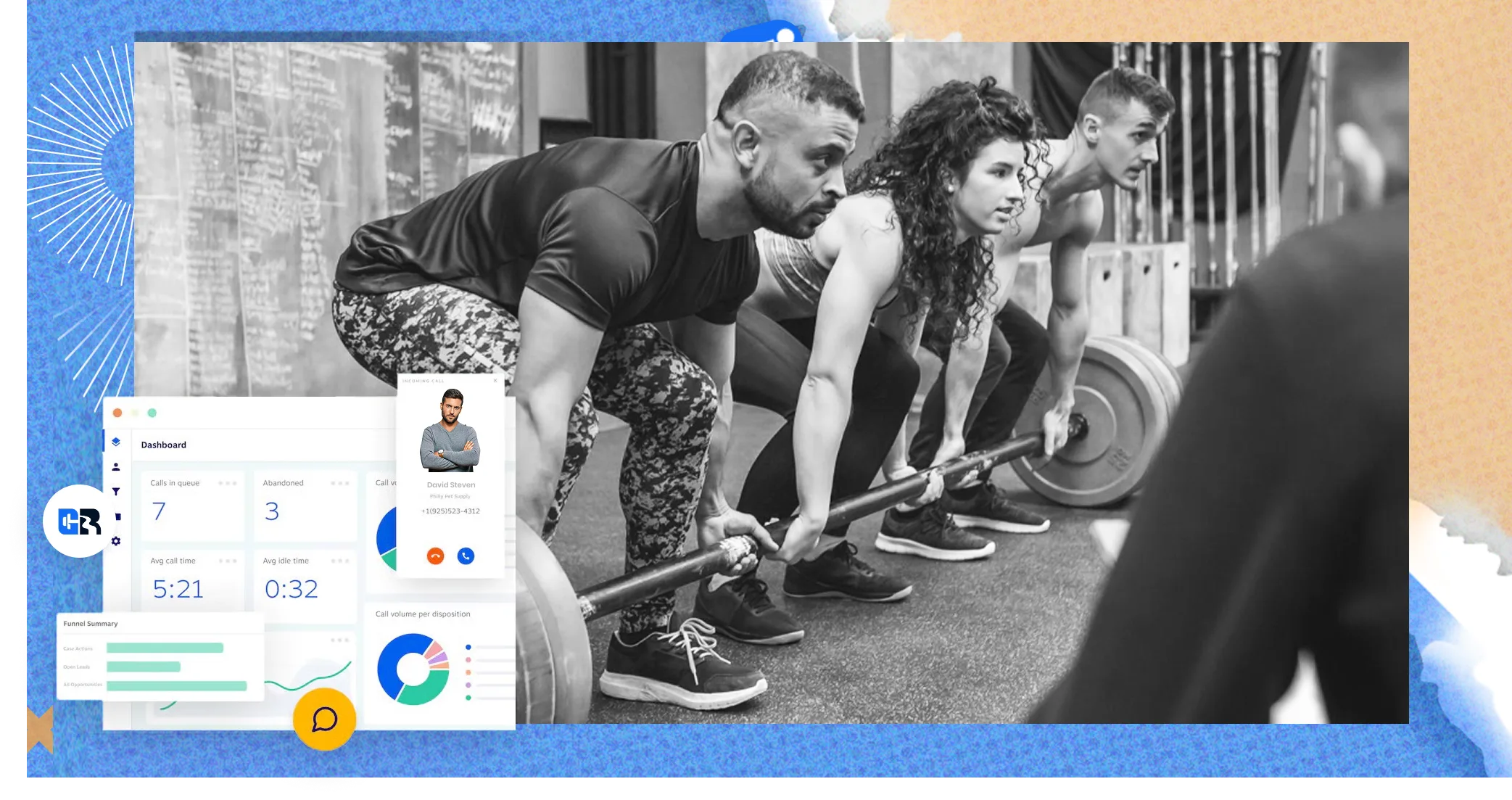Location is the single strategic decision that most strongly determines whether your gym will thrive or simply survive. The right address brings steady visibility, easy access, better member retention, and the right competitive context; the wrong one forces expensive marketing, weak retention, and stalled growth.
Read on for a detailed, practical roadmap, informed by industry numbers and real-world examples, so you can choose (and negotiate for) a place that powers growth from day one.
Why location matters?
A gym’s address is far more than a dot on a lease: it’s how people encounter your brand, how convenient your service feels in daily life, and how easy it is for potential members to turn curiosity into membership. High visibility creates repeated, low-cost impressions; people who pass your facade week after week are far more likely to pop inside on a whim or search online later. Equally, convenience matters: commuting members want minimal friction around peak hours, easy parking or public-transport access, and predictable travel times. Finally, the competitive density around you helps shape your positioning; clusters of gyms can indicate strong demand, but they also force you to differentiate.
- Visibility increases spontaneous footfall and brand recall; good signage and clear frontage can materially improve visits.
- Accessibility (parking, transit, safe walkways) is one of the top retention drivers; when getting to the gym becomes a hassle, attendance drops.
Industry snapshot: the numbers that matter
Whether its your first or seond gym location, to make practical choices, it helps to see the scale and momentum of the market you’re entering:
- The U.S. reached record participation in recent years: about 77 million Americans were members of a gym, studio, or fitness facility in 2024, roughly one in four people, showing that demand remains strong.
- The global health & fitness club market is projected to expand significantly over the decade, with forecasts showing the market growing from roughly $112B (2023) toward ~$200B+ by 2030 (high single-digit CAGR in many reports). This demonstrates a long-term market opportunity.
- The boutique/studio segment is large and growing; estimates put the boutique fitness market in the tens of billions (range ~$46–48B in recent 2024/2025 market reports). They forecast further growth through the decade as consumers pay for focused experiences.
- U.S. industry revenue across gyms and studios has been climbing; recent industry analysis estimates revenue at ~$45.7B (2025 estimates) with continued expansion driven by hybrid offerings and consumer demand.
These figures show two practical things: demand exists across price tiers (budget to luxury) and specialised formats (boutique studios) are strong, so location must align to your model (value chain, convenience, or premium experience).
Who are your potential members?
Understanding the demographics of your location is crucial. The people living or working nearby will shape your offerings, pricing, and marketing strategies.
Matching fitness services to age groups
Different age groups have unique fitness priorities. If your area has a large student population, high-energy workouts like CrossFit, martial arts, or budget-friendly gyms may do well. In contrast, an area with young professionals may prefer premium services, quick classes, and flexible timings.
- 18–25 years: Interested in trendy workouts (HIIT, functional fitness) and affordability.
- 26–40 years: Value time-efficient options like spin and strength training.
- 41–60 years: Look for wellness-oriented services such as pilates and yoga.
- 60+ years: Prioritize gentle mobility, aqua aerobics, and health-focused facilities.
Income and lifestyle indicators
Income levels affect how much people are willing to pay for memberships. For example, opening a luxury boutique gym in a low-income suburb is a mismatch. Similarly, a low-cost 24/7 gym might not thrive in a high-income neighbourhood where people expect premium amenities.
Tip: Use census data, local surveys, and property market trends to understand income distribution and tailor your pricing accordingly.
Accessibility and transport links
A great location must also be easy to reach. Accessibility determines whether people make fitness part of their routine or give up due to inconvenience.
- Traffic flow: Visit the location during peak gym hours (6–9 a.m. and 5–8 p.m.) to test real-world travel times.
- Public transport: Check bus routes, train stops, and cycle lanes. Many members rely on these options.
- Parking: On-site or nearby parking is a huge plus. Make sure it feels safe, especially for evening workouts.
- Neighbourhood safety: Well-lit and secure areas build trust among members.
A location with multiple transport options increases your reach, especially if you target office workers or students without cars.
Space and layout
Good gyms organize flow: warm-up areas, cardio and free-weight zones, class studios, and amenity spaces (reception, changing, showers) in a way that feels effortless. High ceilings and ventilation improve experience and perception; natural light matters psychologically and for retention. Storage and good acoustics reduce damage and complaints; some operators partition noisy classes to protect recovery/small-group classes.
- Essentials to confirm in any viewing: floor load capacity (for heavy rigs), ceiling height (for rope/swings), electrical circuits for cardio/computers, ventilation/AC, and room for storage and staff areas.
- Plan for flexibility: a space you can adapt for new classes or pop-up revenue streams (nutrition kiosks, retail) will serve you better long-term.
Local rules, permits & zoning
Many gym owners overlook local regulations until it’s too late. Zoning laws and restrictions can derail your plans if ignored.
- Zoning approvals: Check whether fitness centres are permitted in the area.
- Noise restrictions: Music and weights dropping can cause issues in residential zones.
- Operating hours: Some councils limit 24/7 gym operations.
- Signage rules: Ensure you’re allowed prominent signage for visibility.
Consulting a solicitor or local authority before signing a lease saves costly legal headaches.
Tools & methods for smart scouting
You no longer need to rely solely on intuition. Modern tools help you evaluate locations with precision.
- Google maps & street view: Assess competitors, parking, and accessibility.
- Footfall analytics tools: Track pedestrian and car traffic near your site.
- Census data tools: Profile demographics and income levels.
- Property websites: Compare rental costs and availability.
- Community forums & social media: Gauge local opinions about safety and demand.
Combining these tools creates a data-driven approach to location scouting, reducing guesswork.
The cost of a gym location
Budgeting for a gym location goes beyond rent. You must also account for utilities, insurance, staff, and ongoing maintenance. Still, rent remains the largest expense and varies based on location type.
Typical rental ranges
- High street: $2,500 – $6,500/month. Premium visibility and walk-ins, but the highest costs.
- Suburban area: $1,200 – $3,000/month. Balanced costs and space, suitable for family-focused gyms.
- Industrial estate/warehouse: $1,000 – $2,500/month. Large open layouts, but low foot traffic.
- Shared space: $650 – $2,000/month. Flexible and affordable, though branding may be limited.
💡 Pro Tip: Negotiate long-term leases. Landlords often offer free rent months, reduced deposits, or shared improvement costs to secure reliable tenants.
Red flags to avoid
Some locations look attractive initially but carry hidden risks. Watch out for:
- Low foot traffic: Increases marketing spend to compensate.
- Bad reputation: Unsafe or unclean areas discourage sign-ups.
- Space limitations: Prevents adding new services as your gym grows.
- Hidden overheads: Maintenance and service charges can eat into profits.
Identifying red flags early prevents you from locking into a costly mistake.
Real-world case examples
Planet Fitness: suburban scale, low-cost model
Planet Fitness has pursued a high-volume, low-cost model and an aggressive expansion strategy that favours suburban strip centres and commuter corridors. By opening many locations close to where people live and drive, the brand has grown membership at scale and delivered consistent systemwide performance (they reported millions of members and hundreds of new openings in recent years). The practical lesson: if your model is affordability and frequent use, suburban or retail-park locations with easy parking and predictable access are ideal.
Takeaway: Match the model to the location. Volume-driven, low-price clubs succeed where parking and daily convenience are maximised.
Barry’s Bootcamp: boutique urban positioning
Barry’s is an example of a boutique brand that doubled down on premium, high-energy studio experiences in dense urban and lifestyle neighbourhoods. After a period of pandemic strain, the brand secured investment and pushed for global expansion, demonstrating that well-positioned boutique studios in high-visibility urban pockets can capture premium pricing and loyal customers. If you plan a boutique studio, choose neighbourhoods with strong discretionary income and visibility.
Takeaway: Boutique studios benefit from city-centre or “lifestyle corridor” locations where experience, convenience, and discovery align.
Equinox: luxury & place-making
Equinox has built a premium ecosystem (clubs, hotels, services) that ties location to lifestyle and real estate partnerships. Their approach shows how a premium offering justifies higher rents through brand positioning and complementary services (retail, food, hospitality). For premium operators, location becomes part of the product: people expect aspirational, convenient, and integrated experiences.
Takeaway: When you charge premium prices, the location must supply the aura: upscale neighbourhoods, integrated real estate, and prestige visibility.
The Gym Group (UK): budget strategy that scales in the right places
The Gym Group’s recent expansion and resilient performance illustrate success with a no-frills, low-cost model positioned where demand is price-sensitive but stable; this is often suburban and edge-of-town retail. Their growth demonstrates the value of choosing locations that match the price-value promise and where operational simplicity keeps margins healthy.
Takeaway: Budget operators win in predictable, repeatable suburban markets where price and convenience dominate choice.
Your game plan for securing the right location
The process of finding the perfect location requires patience and structure.
- Define your model and target member (price point, classes, capacity). Your location must serve that profile.
- Gather demographic and footfall data for candidate areas (census, footfall counters, property sites). Combine numbers, don’t rely on sight alone.
- Shortlist 3–5 sites that match both your model and budget. Include at least one “stretch” site and one conservative option.
- Visit at different times (weekday morning, lunchtime, evening, weekend) and note traffic, nearby uses, and signage sightlines.
- Check zoning and permits with local authorities or a solicitor; confirm signage and operating-hour rules.
- Model total occupancy cost (rent + utilities + service charges + amortised fit-out + debt service) and stress-test for 6–9 months of slow growth.
- Negotiate: request tenant-fit allowance, rent-free build months, and capped operating-cost increases. Get variation clauses and subordination terms in writing.
- Plan an opening cadence that leverages natural footfall: soft launch to the local community, strategic partnerships (coffee shops, studios), and an opening-week event to convert passersby.
By approaching the search systematically, you reduce risks and position your gym for sustainable growth.
Final Thoughts
Your gym’s location is not just where it operates; it is the cornerstone of your success. The right choice brings visibility, accessibility, and alignment with your target audience. The wrong one limits you, no matter how hard you work.
Take time to research, visit sites, and negotiate smartly. Avoid red flags, and remember to plan not just for today but for the next decade.
Once your location is set, your next challenge will be running it efficiently. That’s where GymRoute comes in, helping with scheduling, payments, and member engagement, so you can focus on building a thriving fitness community.
Your journey starts with the right location. Choose wisely, and you’ll be on the path to long-term prosperity.






